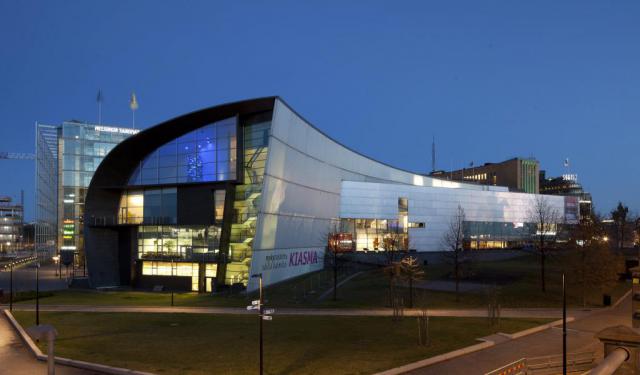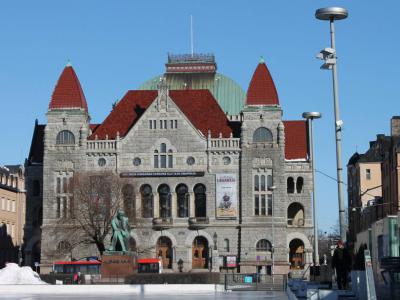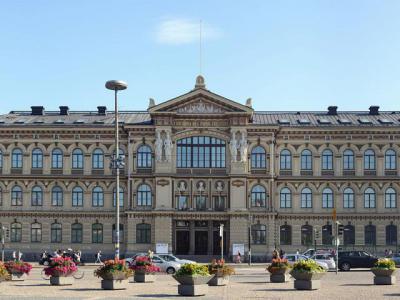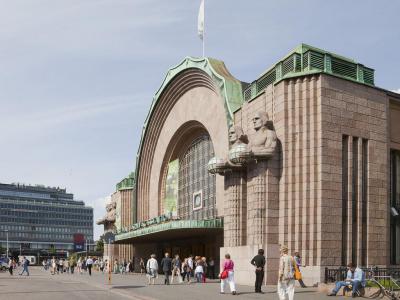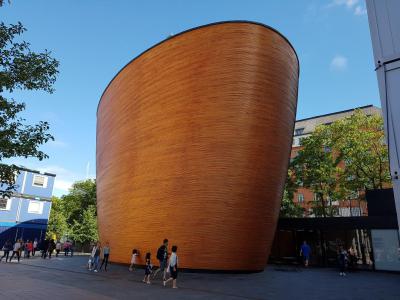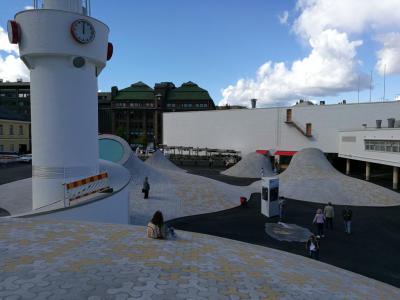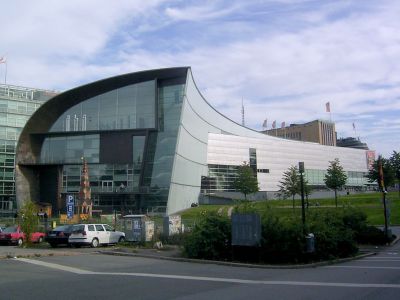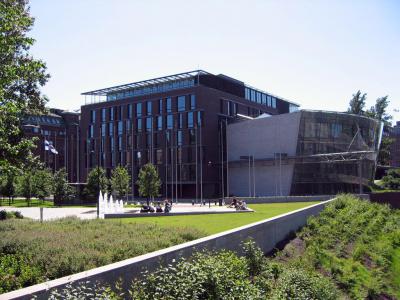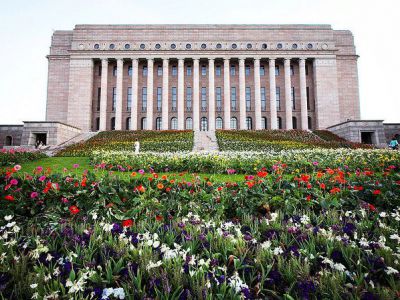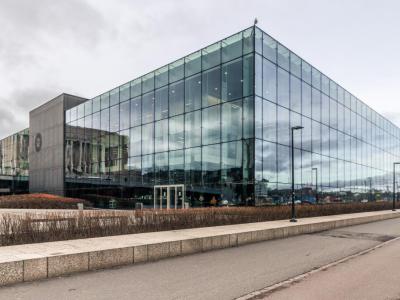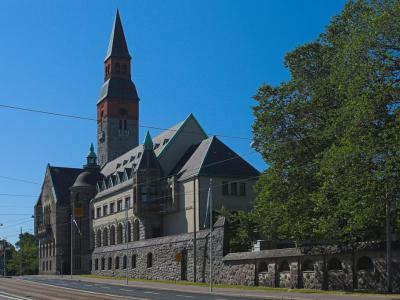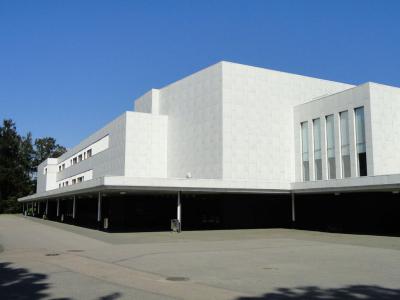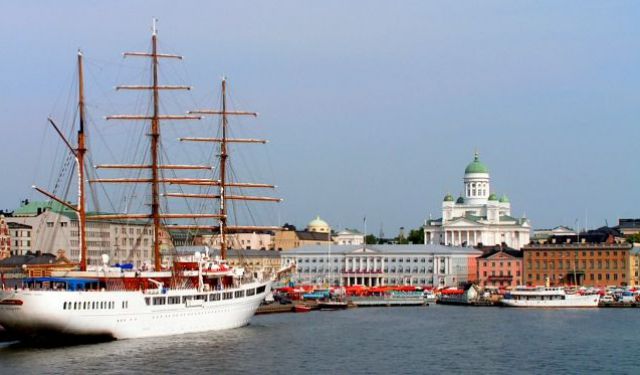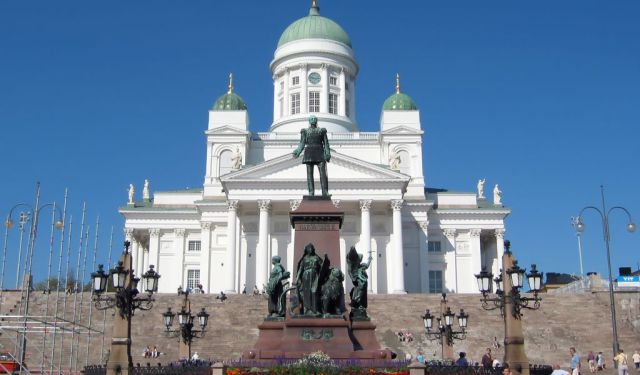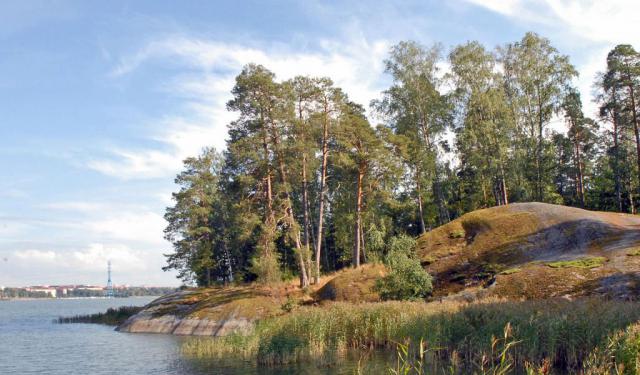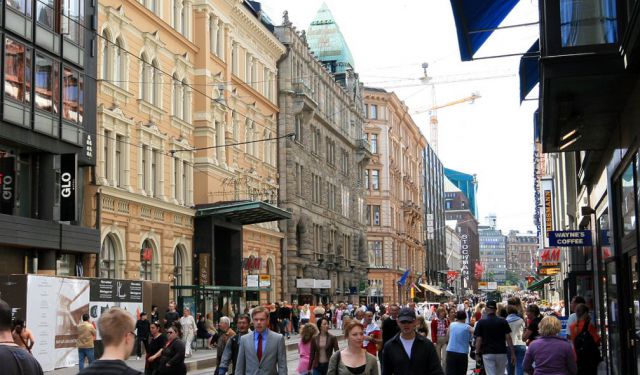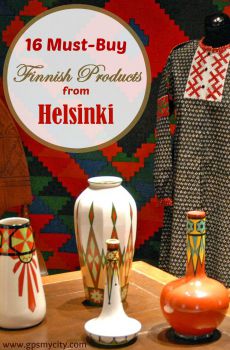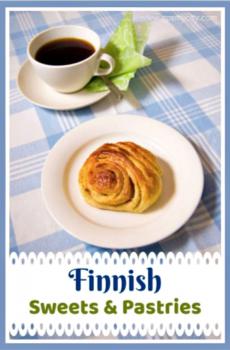Helsinki's Architectural Jewels (Self Guided), Helsinki
Typified by Nordic minimalism and refinement, the architecture of Helsinki is shaped primarily by the early neoclassical style and a regional form of Art Nouveau called Jugendstil. Still, it is the later work by modernist architect, Alvar Aalto, as well as the thriving contemporary designs deeply rooted in nature and local craft that give Helsinki, as well as Finland in general, their current appeal. Much of the city's architecture has social and cultural significance, particularly such buildings as Finlandia Hall, the proverbial Las Vegas Show Center of Finland, and Helsinki Central Railway Station, which welcomes travelers with its distinctive stone statues.
Nearby, the Finnish National Theatre, with its Romantic facade, stands as an elegant symbol of the nation's love for drama and storytelling. Meanwhile, the grand building of the Ateneum Art Museum houses a diverse collection of Finnish and international art.
In stark contrast to the above, with its minimalist design, the Kamppi Chapel of Silence creates a serene atmosphere for reflection and peace and is a tranquil haven amidst the bustling urban landscape.
Similarly to it, the Amos Rex Art Museum and Kiasma, with their modern and innovative architecture, push the boundaries of contemporary art, offering unique visual experiences to visitors.
The Pikkuparlamentti and the Parliament House, symbols of Finnish democracy and governance, are characterized by their respective functionalist and neoclassical appearances.
The Helsinki Music Centre's striking glass facade and acoustically impeccable interiors make it a magnet for music enthusiasts. At the same time, the National Museum of Finland is a fine example of Finnish national romanticism and invites visitors to explore Finland's historical and cultural heritage.
Helsinki's architectural jewels reflect a harmonious blend of tradition and modernity. If you seek architectural inspiration, these landmarks may point you out in the desired direction. To explore these sites, capture their beauty, and be part of the cultural landscape that makes Helsinki truly exceptional, take our self-guided walk.
Nearby, the Finnish National Theatre, with its Romantic facade, stands as an elegant symbol of the nation's love for drama and storytelling. Meanwhile, the grand building of the Ateneum Art Museum houses a diverse collection of Finnish and international art.
In stark contrast to the above, with its minimalist design, the Kamppi Chapel of Silence creates a serene atmosphere for reflection and peace and is a tranquil haven amidst the bustling urban landscape.
Similarly to it, the Amos Rex Art Museum and Kiasma, with their modern and innovative architecture, push the boundaries of contemporary art, offering unique visual experiences to visitors.
The Pikkuparlamentti and the Parliament House, symbols of Finnish democracy and governance, are characterized by their respective functionalist and neoclassical appearances.
The Helsinki Music Centre's striking glass facade and acoustically impeccable interiors make it a magnet for music enthusiasts. At the same time, the National Museum of Finland is a fine example of Finnish national romanticism and invites visitors to explore Finland's historical and cultural heritage.
Helsinki's architectural jewels reflect a harmonious blend of tradition and modernity. If you seek architectural inspiration, these landmarks may point you out in the desired direction. To explore these sites, capture their beauty, and be part of the cultural landscape that makes Helsinki truly exceptional, take our self-guided walk.
How it works: Download the app "GPSmyCity: Walks in 1K+ Cities" from Apple App Store or Google Play Store to your mobile phone or tablet. The app turns your mobile device into a personal tour guide and its built-in GPS navigation functions guide you from one tour stop to next. The app works offline, so no data plan is needed when traveling abroad.
Helsinki's Architectural Jewels Map
Guide Name: Helsinki's Architectural Jewels
Guide Location: Finland » Helsinki (See other walking tours in Helsinki)
Guide Type: Self-guided Walking Tour (Sightseeing)
# of Attractions: 11
Tour Duration: 2 Hour(s)
Travel Distance: 1.9 Km or 1.2 Miles
Author: DanaOffice
Sight(s) Featured in This Guide:
Guide Location: Finland » Helsinki (See other walking tours in Helsinki)
Guide Type: Self-guided Walking Tour (Sightseeing)
# of Attractions: 11
Tour Duration: 2 Hour(s)
Travel Distance: 1.9 Km or 1.2 Miles
Author: DanaOffice
Sight(s) Featured in This Guide:
- Finnish National Theatre
- Ateneum Art Museum
- Helsinki Central Railway Station
- Kamppi Chapel of Silence
- Amos Rex Art Museum
- Kiasma
- Pikkuparlamentti
- Parliament House
- Helsinki Music Centre
- National Museum of Finland
- Finlandia Hall
1) Finnish National Theatre
The National Theatre has been an integral part of Finnish national culture since the 1800s. It got its start in 1872 in Pori. Today, it is located in the north-central section of Helsinki, near the Central Railway Station. It is the oldest known theater of its kind that does performances in Finnish. Up until the year 1902, it was simply called the Finnish Theater.
The current building was completed in 1902 and was done in a Romantic architecture style. At this point in history, the whole country was undergoing a cultural movement which came to be known as Romantic Nationalism, as the people sought to preserve their cultural identity against outside pressure.
Just outside the front entrance is a statue of the famous Aleksis Kivi, who is known for his Romantic novels and short stories. Along with the theater, the arts were used as a way to try to stand up to the oppression of the Russian Empire of the day.
Today the theater travels to many foreign locations but has not lost its central purpose of maintaining the drama of Finland. So, you can see their kind of avant-garde style of international drama set alongside productions that are designed to continue Finnish language performances. Go if you get the chance and take in a performance.
Why You Should Visit:
Very architecturally pleasing, photogenic, and the smaller stage productions bring the magic.
The current building was completed in 1902 and was done in a Romantic architecture style. At this point in history, the whole country was undergoing a cultural movement which came to be known as Romantic Nationalism, as the people sought to preserve their cultural identity against outside pressure.
Just outside the front entrance is a statue of the famous Aleksis Kivi, who is known for his Romantic novels and short stories. Along with the theater, the arts were used as a way to try to stand up to the oppression of the Russian Empire of the day.
Today the theater travels to many foreign locations but has not lost its central purpose of maintaining the drama of Finland. So, you can see their kind of avant-garde style of international drama set alongside productions that are designed to continue Finnish language performances. Go if you get the chance and take in a performance.
Why You Should Visit:
Very architecturally pleasing, photogenic, and the smaller stage productions bring the magic.
2) Ateneum Art Museum (must see)
On Rautatientori square, close to the Helsinki Central rail stations, lies Ateneum. It is one of three museums that form the Finnish National Gallery. The other two are the Kiasma Museum of Contemporary Art and the Sinebrychoff Art Museum.
The museum gallery focuses on Finnish art from the 18th to the 20th centuries. There are also 650 or so international works, including one piece by Vincent van Gogh.
The building was designed by Theodor Höijer and built in 1887. The heavily ornamented exterior includes busts of famous artists like Raphael. Four female figures support the pediment, each representing one of the four classical art forms-architecture, painting, sculpture, and geometry. Above, the Goddess of Art, Pallas Athene, blesses the artworks.
Ateneum has rotating exhibitions in addition to their permanent collection, and they offer Saturday workshops with museum admission. The gallery is closed on Mondays. There's a museum shop on the property as well.
Why You Should Visit:
One of the best art museums in the Nordics, and certainly recommendable if you want to have a look at the most famous Finnish pieces of art. The well-stocked shop is an excellent place for postcards and tasteful gifts from Helsinki. The bistro serves excellent Finnish food in an inspiring setting.
The museum gallery focuses on Finnish art from the 18th to the 20th centuries. There are also 650 or so international works, including one piece by Vincent van Gogh.
The building was designed by Theodor Höijer and built in 1887. The heavily ornamented exterior includes busts of famous artists like Raphael. Four female figures support the pediment, each representing one of the four classical art forms-architecture, painting, sculpture, and geometry. Above, the Goddess of Art, Pallas Athene, blesses the artworks.
Ateneum has rotating exhibitions in addition to their permanent collection, and they offer Saturday workshops with museum admission. The gallery is closed on Mondays. There's a museum shop on the property as well.
Why You Should Visit:
One of the best art museums in the Nordics, and certainly recommendable if you want to have a look at the most famous Finnish pieces of art. The well-stocked shop is an excellent place for postcards and tasteful gifts from Helsinki. The bistro serves excellent Finnish food in an inspiring setting.
3) Helsinki Central Railway Station (must see)
The Central Railway Station is one of the most visited and well-known sites in the city. There are over two hundred thousand passengers that pass through this place every day. On that basis, it is the single busiest building in the whole country.
The whole complex of rails in the country was started in 1860 when the first track was opened for business between Helsinki and Hameenlinna, a city 100 kilometer north of Helsinki. The first station here was designed by Carl Edelfelt. The station's popularity grew through the years, and so the location had to be renovated multiple times. The last such renovation was completed in 2003 when a shopping center was added to the complex.
One little known tidbit about this station is the Presidential Lounge. This private 50-square-meter waiting lounge is available for exclusive use of the President of Finland and his/her official guests. It was first built for the Emperor of Russia in 1911. After a short stint as a military hospital, it has been the private lounge for the President ever since. It is the only such structure known in the world.
Tip:
Underneath the station, there is a multitude of shops, including supermarkets, and also a walkway over to the other side of Kaivokatu street, which gets you into downtown.
The whole complex of rails in the country was started in 1860 when the first track was opened for business between Helsinki and Hameenlinna, a city 100 kilometer north of Helsinki. The first station here was designed by Carl Edelfelt. The station's popularity grew through the years, and so the location had to be renovated multiple times. The last such renovation was completed in 2003 when a shopping center was added to the complex.
One little known tidbit about this station is the Presidential Lounge. This private 50-square-meter waiting lounge is available for exclusive use of the President of Finland and his/her official guests. It was first built for the Emperor of Russia in 1911. After a short stint as a military hospital, it has been the private lounge for the President ever since. It is the only such structure known in the world.
Tip:
Underneath the station, there is a multitude of shops, including supermarkets, and also a walkway over to the other side of Kaivokatu street, which gets you into downtown.
4) Kamppi Chapel of Silence (must see)
The Kamppi Chapel is a non-denominational spot for people to seek sanctuary from busy Helsinki's hustle and bustle. The striking building is found in Narinkka Square. It's oval on the outside and inside and is often described as neutral, austere, or unadorned. It is similar in that way to many multi-faith prayer rooms found around the world.
But just because it is minimalist does not mean that the building is not noteworthy. It was built as part of the World Design Capital program, which Helsinki won in 2012. The Chapel won the International Architecture Award in 2010.
The Chapel of Silence is located right in one of Helsinki's busiest areas, which is part of its charm. Many visitors say they wish more cities had spots like this; it's an uplifting place to slow down and disconnect from the busy world.
But just because it is minimalist does not mean that the building is not noteworthy. It was built as part of the World Design Capital program, which Helsinki won in 2012. The Chapel won the International Architecture Award in 2010.
The Chapel of Silence is located right in one of Helsinki's busiest areas, which is part of its charm. Many visitors say they wish more cities had spots like this; it's an uplifting place to slow down and disconnect from the busy world.
5) Amos Rex Art Museum
Amos Rex, which originated from the Amos Anderson Art Museum established in 1965 and named after the publisher and art supporter Amos Anderson, is known for its focus on modern Finnish art from the 20th to the 21st centuries.
In 2013, the museum announced its plan to construct a new underground extension beneath Lasipalatsi Square, close to its main site on Yrjönkatu, utilizing both the underground space and the Lasipalatsi building's above-ground facilities. The design was crafted by JKMM Architects, known for their work on the Turku Main Library and the Finnish pavilion at the 2010 Shanghai World Expo.
This new development represented a fascinating blend of historical and contemporary elements. Situated under Lasipalatsi square, the modern structure, featuring entrance areas, offices, and the Bio Rex cinema, aimed to introduce a sculptural aesthetic of the new century to the site, echoing the square's 1930s appearance.
Construction kicked off in January 2016, and by August 2018, the complex was open to the public. The design, highlighted by vaulted domes, allowed for a spacious, pillar-free interior. These domes, made of on-site cast reinforced concrete, were not only structurally efficient but also added versatility to the space. Skylights were strategically placed to frame views of nearby landmarks, like the central chimney, connecting the underground museum to the cityscape.
The Amos Anderson Art Museum mainly features artworks from the 20th century, including some of the earliest pieces from Amos Anderson's collection. Among its notable paintings are works by artists such as Francesco Bassano, Paul Signac, Louis Valtat, Roger Fry, Alfred Finch, Ragnar Ekelund, Magnus Enckell, Eero Nelimarkka, Tyko Sallinen, Tove Jansson, and the Swedish painter Palm. The museum focuses on acquiring contemporary art for its collections.
In 2013, the museum announced its plan to construct a new underground extension beneath Lasipalatsi Square, close to its main site on Yrjönkatu, utilizing both the underground space and the Lasipalatsi building's above-ground facilities. The design was crafted by JKMM Architects, known for their work on the Turku Main Library and the Finnish pavilion at the 2010 Shanghai World Expo.
This new development represented a fascinating blend of historical and contemporary elements. Situated under Lasipalatsi square, the modern structure, featuring entrance areas, offices, and the Bio Rex cinema, aimed to introduce a sculptural aesthetic of the new century to the site, echoing the square's 1930s appearance.
Construction kicked off in January 2016, and by August 2018, the complex was open to the public. The design, highlighted by vaulted domes, allowed for a spacious, pillar-free interior. These domes, made of on-site cast reinforced concrete, were not only structurally efficient but also added versatility to the space. Skylights were strategically placed to frame views of nearby landmarks, like the central chimney, connecting the underground museum to the cityscape.
The Amos Anderson Art Museum mainly features artworks from the 20th century, including some of the earliest pieces from Amos Anderson's collection. Among its notable paintings are works by artists such as Francesco Bassano, Paul Signac, Louis Valtat, Roger Fry, Alfred Finch, Ragnar Ekelund, Magnus Enckell, Eero Nelimarkka, Tyko Sallinen, Tove Jansson, and the Swedish painter Palm. The museum focuses on acquiring contemporary art for its collections.
6) Kiasma
Kiasma is Helsinki’s museum of contemporary art. The name refers to the part of the eye, called the chiasma, where the optic nerves curves in the brain. This apparently inspired the interesting shape of the building, which was built in the late 1990s. It is a perfect shape for a museum that holds works by contemporary artists.
The galleries within the building are all of different sizes, with each room having a gently curved wall. The angular nature of the ambient light available in the northern latitudes also adds to the ambiance and makes for a wonderful backdrop to view the artwork. In 2016, Kiasma attracted over 310,000 visitors.
In addition to collected works of art, there are also traveling exhibits, lectures, theater, music and all sorts of adventures into contemporary art. It is truly an adventure for the senses. There is also a gift store, café, and a research library.
Why You Should Visit:
While it's worth going to this great museum for its exquisite architecture alone, the exhibitions can be quite interesting and it feels like the curators do try to bring in many different artists/storytellers.
Some exhibits are more confronting than others but overall a unique way to experience the art culture in Helsinki. As a bonus, the shop has some great souvenirs and gift ideas on offer.
Tip:
The museum has no permanent collection, so be sure to check what's actually on show.
The galleries within the building are all of different sizes, with each room having a gently curved wall. The angular nature of the ambient light available in the northern latitudes also adds to the ambiance and makes for a wonderful backdrop to view the artwork. In 2016, Kiasma attracted over 310,000 visitors.
In addition to collected works of art, there are also traveling exhibits, lectures, theater, music and all sorts of adventures into contemporary art. It is truly an adventure for the senses. There is also a gift store, café, and a research library.
Why You Should Visit:
While it's worth going to this great museum for its exquisite architecture alone, the exhibitions can be quite interesting and it feels like the curators do try to bring in many different artists/storytellers.
Some exhibits are more confronting than others but overall a unique way to experience the art culture in Helsinki. As a bonus, the shop has some great souvenirs and gift ideas on offer.
Tip:
The museum has no permanent collection, so be sure to check what's actually on show.
7) Pikkuparlamentti
The Pikkuparlamentti is an annex to the official governmental building of Finland. It is a fairly new structure, as far as buildings go in town, having been completed in June of 2004. Pekka Helin & Co did the design.
It is 11 stories tall and contains a total of 295 offices. From an architectural point of view, you will want to visit the atrium and the small meeting rooms that surround it. Each of the little spaces is done in a different kind of native wood, which is really striking. Finnish bedrock was also used in the construction of the floor.
You will also want to visit the restaurant that is located on the first floor. It has some of the best food in town, and is fairly reasonable in price for a slightly upscale location. So it is worth a stop.
There is also a new Visitor’s Center located in the new annex. You can see a very good informative video here about the workings of the Finnish Government, as well as receive info on the MP’s.
It is 11 stories tall and contains a total of 295 offices. From an architectural point of view, you will want to visit the atrium and the small meeting rooms that surround it. Each of the little spaces is done in a different kind of native wood, which is really striking. Finnish bedrock was also used in the construction of the floor.
You will also want to visit the restaurant that is located on the first floor. It has some of the best food in town, and is fairly reasonable in price for a slightly upscale location. So it is worth a stop.
There is also a new Visitor’s Center located in the new annex. You can see a very good informative video here about the workings of the Finnish Government, as well as receive info on the MP’s.
8) Parliament House
The Parliament House is the official location of the governing body of Finland. It is located in Helsinki, in the Toolo District. Completed in 1931, this is where the history of the country has been made. You can almost feel that as you enter. Moreover, the place houses one of the best art collections in town.
From an architectural point of view, the building is a hybrid mix of neoclassical and 20th Century modernistic style design. Note the simple design of the columns and balusters; yet, the fourteen columns on the outside are topped with Corinthian capitals. The marble staircases are also quite lovely... so, you get a bit of both visual worlds.
There is also a visitor’s center that has been built in the annex to the house. It is the first such office opened to the public. If you would like to see the whole building, however, you are able to book a guided tour.
Why You Should Visit:
The cubic style and towering pink columns are probably like no other building you have ever seen and it is well worth taking a stroll to admire all the little features.
From an architectural point of view, the building is a hybrid mix of neoclassical and 20th Century modernistic style design. Note the simple design of the columns and balusters; yet, the fourteen columns on the outside are topped with Corinthian capitals. The marble staircases are also quite lovely... so, you get a bit of both visual worlds.
There is also a visitor’s center that has been built in the annex to the house. It is the first such office opened to the public. If you would like to see the whole building, however, you are able to book a guided tour.
Why You Should Visit:
The cubic style and towering pink columns are probably like no other building you have ever seen and it is well worth taking a stroll to admire all the little features.
9) Helsinki Music Centre
The Helsinki Music Centre stands as a prominent landmark in Töölönlahti, Helsinki, functioning both as a concert hall and a hub for musical activities. It serves as the base for the esteemed Sibelius Academy, along with housing two symphony orchestras: the Finnish Radio Symphony Orchestra and the Helsinki Philharmonic Orchestra. Positioned between the renowned Finlandia Hall and the contemporary art museum Kiasma, and opposite the Parliament of Finland, its location holds prestige.
The main concert hall, designed in a vineyard-style layout, accommodates 1,704 attendees, while the building encompasses five smaller rooms catering to 140-400 people each. These rooms include spaces for chamber music, chamber opera, organ performances, electrically amplified music, and rehearsals. Reflecting Helsinki's modernist architectural style, the Music Centre integrates seamlessly into its surroundings, despite the challenge posed by neighboring architectural landmarks representing various styles and periods.
The winning design, "A Mezza Voce" by LPR Architects, emphasizes subtlety, aiming to harmonize with rather than overshadow its surroundings. To maintain visual cohesion, a significant portion of the building is constructed underground, aligning its roof with adjacent structures. A landscaped terrace above the underground section extends into an open park, while the expansive glass-walled foyer welcomes visitors with ample daylight. Notably, the main concert hall features partially glass walls at the foyer level, allowing natural light to penetrate inside, though curtains offer control over light during performances.
Chief architect Marko Kivistö intentionally crafted simplistic exterior forms to contrast with the building's intricate interior. The green hue of the copper facade connects the structure with its verdant surroundings, aiming to frame and offer a fresh perspective on the neighboring Kiasma Museum's expressive curved shape across the park.
The main concert hall, designed in a vineyard-style layout, accommodates 1,704 attendees, while the building encompasses five smaller rooms catering to 140-400 people each. These rooms include spaces for chamber music, chamber opera, organ performances, electrically amplified music, and rehearsals. Reflecting Helsinki's modernist architectural style, the Music Centre integrates seamlessly into its surroundings, despite the challenge posed by neighboring architectural landmarks representing various styles and periods.
The winning design, "A Mezza Voce" by LPR Architects, emphasizes subtlety, aiming to harmonize with rather than overshadow its surroundings. To maintain visual cohesion, a significant portion of the building is constructed underground, aligning its roof with adjacent structures. A landscaped terrace above the underground section extends into an open park, while the expansive glass-walled foyer welcomes visitors with ample daylight. Notably, the main concert hall features partially glass walls at the foyer level, allowing natural light to penetrate inside, though curtains offer control over light during performances.
Chief architect Marko Kivistö intentionally crafted simplistic exterior forms to contrast with the building's intricate interior. The green hue of the copper facade connects the structure with its verdant surroundings, aiming to frame and offer a fresh perspective on the neighboring Kiasma Museum's expressive curved shape across the park.
10) National Museum of Finland
The National Museum of Finland tells the story of Finnish history from ancient times to the present. Its architecture reflects the Finnish national romantic style, characterized by grey granite and green copper roofs reminiscent of medieval churches and castles. Inside, the decor is mainly in the art nouveau style.
Designed by architects Herman Gesellius, Armas Lindgren, and Eliel Saarinen, the museum was constructed over five years, from 1905 to 1910, and opened to the public in 1916. It was officially named the Finnish National Museum after Finland gained independence in 1917. Bullet holes from the Civil War that occurred shortly after are still visible on the museum doors. The main entrance is adorned with famous ceiling frescoes depicting scenes from the national epic poem Kalevala, painted by Akseli Gallen-Kallela.
The museum's permanent exhibition is divided into sections showcasing coins, medals, decorations, silverware, jewelry, and weaponry. 'The Prehistory of Finland' features artifacts dating back to the Stone Age. Additionally, there are exhibits covering Finland's history from the Middle Ages to the early 20th century, including the periods of the Swedish Kingdom and the Russian Empire before the Industrial Revolution.
One of the favorite exhibits within the museum is the hands-on, interactive VINTTI section. Among other features, it offers preview to all the six permanent exhibition sections.
Why You Should Visit:
The entire museum is quite engaging. This engagement will keep you there for a while as you go through the different periods of Finland, rising from the bottom of the sea to what it is today.
Tips:
The exhibits are extensive, so allow yourself at least 3-4 hours to see all.
Easy to spend the whole day with a family, as there is a restaurant on site. Younger guests must be accompanied by an adult at all times.
Designed by architects Herman Gesellius, Armas Lindgren, and Eliel Saarinen, the museum was constructed over five years, from 1905 to 1910, and opened to the public in 1916. It was officially named the Finnish National Museum after Finland gained independence in 1917. Bullet holes from the Civil War that occurred shortly after are still visible on the museum doors. The main entrance is adorned with famous ceiling frescoes depicting scenes from the national epic poem Kalevala, painted by Akseli Gallen-Kallela.
The museum's permanent exhibition is divided into sections showcasing coins, medals, decorations, silverware, jewelry, and weaponry. 'The Prehistory of Finland' features artifacts dating back to the Stone Age. Additionally, there are exhibits covering Finland's history from the Middle Ages to the early 20th century, including the periods of the Swedish Kingdom and the Russian Empire before the Industrial Revolution.
One of the favorite exhibits within the museum is the hands-on, interactive VINTTI section. Among other features, it offers preview to all the six permanent exhibition sections.
Why You Should Visit:
The entire museum is quite engaging. This engagement will keep you there for a while as you go through the different periods of Finland, rising from the bottom of the sea to what it is today.
Tips:
The exhibits are extensive, so allow yourself at least 3-4 hours to see all.
Easy to spend the whole day with a family, as there is a restaurant on site. Younger guests must be accompanied by an adult at all times.
11) Finlandia Hall
Located in central Helsinki, Finlandia Hall is the proverbial Las Vegas Show Center of Finland as it is host to many of the finest conferences, concerts and art exhibits you will find anywhere in town. If you plan on coming to Helsinki, you will want to get a list of what is happening there right away. Thousands of people visit it each year. The largest hall can seat 1700 people.
Designed to be similar to the concert hall in Essen, the building is an architectural thing of beauty. Asymmetry is prominently featured not only for beauty but for the acoustics. The marble used in the floors is also quite striking against the cobalt blue walls. The exterior is done in curved slabs of marble.
The interior design of the building is a tribute to detail. The design of each lamp, piece of furniture, panel, flooring material and decorative board reflects the mature approach resulting from Alvar Aalto’s long career as an architect. All the materials speak the language of nature, simply without technically artificial tones. This is because Aalto’s basic view was that architecture should create a frame for human beings. In the Finlandia Hall, the focus is not on extraordinary forms or ostentatious interior, but on the audience and on the performers. According to Aalto, the audience at the Finlandia Hall need not dress up like people used to in the opera foyers and gilded concert halls of the old days. What people wear should be as genuine and natural as the environment in the building.
Why You Should Visit:
The architecture is fantastic, the location by the lake is superb, and the café downstairs – Veranda – is worth a visit.
Inside, the space is not really set up for self-guided tourists to enjoy, but there are guided tours during the week.
Designed to be similar to the concert hall in Essen, the building is an architectural thing of beauty. Asymmetry is prominently featured not only for beauty but for the acoustics. The marble used in the floors is also quite striking against the cobalt blue walls. The exterior is done in curved slabs of marble.
The interior design of the building is a tribute to detail. The design of each lamp, piece of furniture, panel, flooring material and decorative board reflects the mature approach resulting from Alvar Aalto’s long career as an architect. All the materials speak the language of nature, simply without technically artificial tones. This is because Aalto’s basic view was that architecture should create a frame for human beings. In the Finlandia Hall, the focus is not on extraordinary forms or ostentatious interior, but on the audience and on the performers. According to Aalto, the audience at the Finlandia Hall need not dress up like people used to in the opera foyers and gilded concert halls of the old days. What people wear should be as genuine and natural as the environment in the building.
Why You Should Visit:
The architecture is fantastic, the location by the lake is superb, and the café downstairs – Veranda – is worth a visit.
Inside, the space is not really set up for self-guided tourists to enjoy, but there are guided tours during the week.
Walking Tours in Helsinki, Finland
Create Your Own Walk in Helsinki
Creating your own self-guided walk in Helsinki is easy and fun. Choose the city attractions that you want to see and a walk route map will be created just for you. You can even set your hotel as the start point of the walk.
Helsinki Introduction Walking Tour
Helsinki was created as a trading town by Swedish King Gustav I in 1550, but it is believed that Swedish settlers had arrived here in the 1300s. Sometimes called the “Daughter of the Baltic,” Helsinki is a port town through and through. Its close connection to its Baltic neighbors, Sweden and Russia, has shaped its history for better and worse over the last 400 years. Both Finnish and Swedish... view more
Tour Duration: 2 Hour(s)
Travel Distance: 3.1 Km or 1.9 Miles
Tour Duration: 2 Hour(s)
Travel Distance: 3.1 Km or 1.9 Miles
Helsinki's Historical Churches
Because of Finland's former affiliations with neighboring Sweden and Russia, it's no wonder that the religious tapestry of Helsinki is dominated by Lutheran and Orthodox churches. Nonetheless, there are also some beautiful architectural expressions of other Christian denominations like Anglican and Catholic to be found in the city, each holding a special place in its religious narrative.... view more
Tour Duration: 2 Hour(s)
Travel Distance: 3.0 Km or 1.9 Miles
Tour Duration: 2 Hour(s)
Travel Distance: 3.0 Km or 1.9 Miles
Seurasaari Island Walking Tour
Seurasaari Island in Helsinki is best known as the home to the popular open-air museum. This venue offers a glimpse into the life of Finland's countryside in various epochs, showcasing old, mainly wooden houses, some of which – once lived in by famous people in Finnish history – were transplanted to the island and thus became part of the museum.
Among the notable attractions here are... view more
Tour Duration: 2 Hour(s)
Travel Distance: 1.6 Km or 1 Miles
Among the notable attractions here are... view more
Tour Duration: 2 Hour(s)
Travel Distance: 1.6 Km or 1 Miles
Finnish Souvenir Shopping Tour
When in Helsinki, souvenir shopping can be an exciting adventure allowing you to bring home a memorable piece of Finland worth having in your household. Depending on your inclinations, these could include sauna bucket and ladle, traditional Finnish music instruments, hand-woven long-tufted rugs (ryija), Finnish vodka made from Arctic-grown berries, or something else.
Those in the know can give... view more
Tour Duration: 1 Hour(s)
Travel Distance: 1.9 Km or 1.2 Miles
Those in the know can give... view more
Tour Duration: 1 Hour(s)
Travel Distance: 1.9 Km or 1.2 Miles
Useful Travel Guides for Planning Your Trip
16 Distinctively Finnish Things to Buy in Helsinki
Shopping in Helsinki for an extraordinary range of tasteful and distinctive products is made simple and easy with the creation of a design district in the heart of the city which has many department stores, shopping centers, and boutique shops bunched together. The Finnish capital is a good city for...
Finnish Sweets and Pastries
The country of thousands of lakes and the magical homeland of Santa Claus, Finland is also a major producer of quality chocolate and many other sweet delights without which surviving long winter nights in this Nordic part of Europe would have been far too boring. Big on coffee, the Finns love their...
The Most Popular Cities
/ view all
